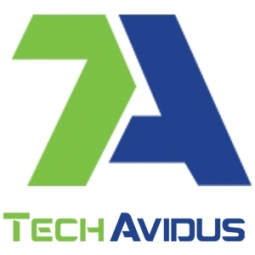
技术
- 平台即服务 (PaaS) - 应用开发平台
适用行业
- 电子商务
- 零售
适用功能
- 采购
- 产品研发
用例
- 零售店自动化
客户
多供应商电子商务
关于客户
多供应商电子商务平台在为商务人士带来收入方面提供了重要机会。随着对此类市场的需求被推动,大多数企业家从他们的在线商店转向多供应商市场。因此,对多供应商市场开发的需求也被推到了一个新的水平。
挑战
开发人员必须为各个供应商开发个性化面板,以帮助他们在平台上发布产品并私下保存记录。旨在简化供应商的整体产品管理和上市流程。客户还希望通过为买家提供一个选项来比较不同供应商的产品并制作愿望清单以通过在线支付直接从购物车中购买来帮助他们。需要一个多供应商电子商务平台来帮助管理员通过高级列表运行多个广告。
因此,通过与先进技术保持同步,将客户的基本需求转化为功能齐全的多供应商市场电子商务平台对团队来说是一个积极的挑战。
解决方案
通过选择 TechAvidus 进行多供应商电子商务平台开发,客户以更具可扩展性和可访问性的方式利用了最新技术。 TechAvidus 的电子商务开发人员 - 客户有权拥有尽可能多的产品和类别。多学科电子商务产品开发团队以这样的方式开发了一个商店,通过超级管理员可以从管理面板控制一切,无论是供应商、订单、付款还是高级列表。确保独立供应商可以像产品一样轻松和完美地经营他们的商店。
由于商店内供应商之间的激烈竞争,系统将让买家比较产品以最优惠的价格购买。买家还可以制作愿望清单并通过在线支付购买产品。

Case Study missing?
Start adding your own!
Register with your work email and create a new case study profile for your business.
相关案例.

Case Study
Improving Production Line Efficiency with Ethernet Micro RTU Controller
Moxa was asked to provide a connectivity solution for one of the world's leading cosmetics companies. This multinational corporation, with retail presence in 130 countries, 23 global braches, and over 66,000 employees, sought to improve the efficiency of their production process by migrating from manual monitoring to an automatic productivity monitoring system. The production line was being monitored by ABB Real-TPI, a factory information system that offers data collection and analysis to improve plant efficiency. Due to software limitations, the customer needed an OPC server and a corresponding I/O solution to collect data from additional sensor devices for the Real-TPI system. The goal is to enable the factory information system to more thoroughly collect data from every corner of the production line. This will improve its ability to measure Overall Equipment Effectiveness (OEE) and translate into increased production efficiencies. System Requirements • Instant status updates while still consuming minimal bandwidth to relieve strain on limited factory networks • Interoperable with ABB Real-TPI • Small form factor appropriate for deployment where space is scarce • Remote software management and configuration to simplify operations

Case Study
Digital Retail Security Solutions
Sennco wanted to help its retail customers increase sales and profits by developing an innovative alarm system as opposed to conventional connected alarms that are permanently tethered to display products. These traditional security systems were cumbersome and intrusive to the customer shopping experience. Additionally, they provided no useful data or analytics.

Case Study
How Sirqul’s IoT Platform is Crafting Carrefour’s New In-Store Experiences
Carrefour Taiwan’s goal is to be completely digital by end of 2018. Out-dated manual methods for analysis and assumptions limited Carrefour’s ability to change the customer experience and were void of real-time decision-making capabilities. Rather than relying solely on sales data, assumptions, and disparate systems, Carrefour Taiwan’s CEO led an initiative to find a connected IoT solution that could give the team the ability to make real-time changes and more informed decisions. Prior to implementing, Carrefour struggled to address their conversion rates and did not have the proper insights into the customer decision-making process nor how to make an immediate impact without losing customer confidence.

Case Study
Ensures Cold Milk in Your Supermarket
As of 2014, AK-Centralen has over 1,500 Danish supermarkets equipped, and utilizes 16 operators, and is open 24 hours a day, 365 days a year. AK-Centralen needed the ability to monitor the cooling alarms from around the country, 24 hours a day, 365 days a year. Each and every time the door to a milk cooler or a freezer does not close properly, an alarm goes off on a computer screen in a control building in southwestern Odense. This type of alarm will go off approximately 140,000 times per year, equating to roughly 400 alarms in a 24-hour period. Should an alarm go off, then there is only a limited amount of time to act before dairy products or frozen pizza must be disposed of, and this type of waste can quickly start to cost a supermarket a great deal of money.

Case Study
Supermarket Energy Savings
The client had previously deployed a one-meter-per-store monitoring program. Given the manner in which energy consumption changes with external temperature, hour of the day, day of week and month of year, a single meter solution lacked the ability to detect the difference between a true problem and a changing store environment. Most importantly, a single meter solution could never identify root cause of energy consumption changes. This approach never reduced the number of truck-rolls or man-hours required to find and resolve issues.








